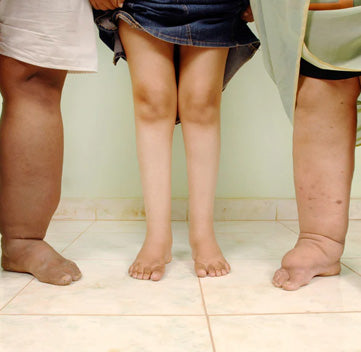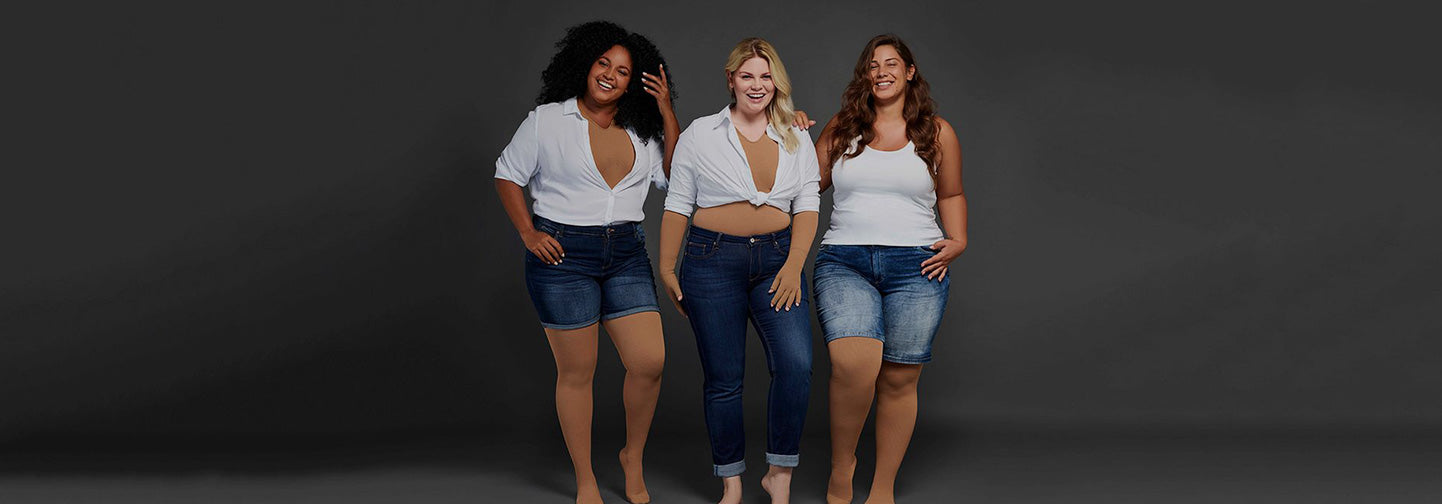Swelling in various parts of the body, from injury or inflammation, including veins, arms and legs. A build-up of fluid in the tissue is known as oedema. Unfortunately, oedema can go undetected for quite a while before there is an onset of pain. But, the progression of oedema can effectively be slowed down through the help of compression and therapy at early stages! Equip yourself with the knowledge on how to recognise oedema earlier, and how to manage it in different parts of the body.
Overview Of Types Of Oedema

Elephantiasis: Legs Enlargement Due to Swelling of Tissue The lymphatic system in our bodies is an intricate collection of muscles and tissue. The primary functions of the system are to ensure e...

Phlebolymphedema - Take Water in Your Veins Seriously
What is Phlebolymphedema? The circulatory system is responsible for transporting blood throughout our body and facilitates the transfer of oxygen from head to toe. Our heart pumps the blood thr...

Lipedema: Symmetric Enlargement Of The Legs A healthy diet and ample exercise are effective tools in maintaining well-being in most people. A regular routine helps regulate the fat levels in our b...

Heavy, swollen legs that are often associated with pain when touched and limited mobility, can have many different causes. In most cases, they’re caused by one of two primary issues: a lymph draina...
Frequently Asked Questions / FAQS About Oedema
What Is Oedema?
Oedema is a build up of retained water or other fluid within the body, most commonly in the soft tissue around your joints.
What Causes Oedema?
Oedema is caused by a range of factors, including long periods of immobility, genetic predisposition, traumatic injury, lymphatic or venous issues, and in more serious cases it can be caused by issues affecting the heart, kidney and liver.
How Is Oedema Treated?
In mild cases, it normally goes away on it's own. However, in more serious or chronic cases it can be treated with diuretics, compression garments and specialised massage.
Is Oedema A Sign Of Something Else?
In cases where oedema is not going away by itself, it can often be symptomatic of issues affecting your heart and veins. This is normally due to venous insufficiency or congestive heart failure, and if it isn't going away, it's important to seek medical advice.
What Is The Difference Between Oedema And Edema?
There's no difference between the two apart from spelling. Oedema is the original spelling while edema is the Americanised spelling, but both mean the same thing.
How Do I Prevent Oedema Occurring?
While you can't completely stop it occurring, there are many things you can do to minimise fluid retention, including regular exercise, maintaining a healthy weight, changing your diet to cut out fat and sugars and focus on more plant based intake and wearing compression stockings while seated or standing for long periods of time.
How Do I Stop Swelling In My Ankles?
Using medical grade compression garments on your ankles and lower legs helps to minimise swelling, and is best done in combination with exercise and stretching to get the muscles pumping and filtering the fluid out of the soft tissue.
What Foods Help To Reduce Oedema?
Changing your diet can have a huge effect on oedema. Start by cutting down on foods high in saturated fat and salt, and start on a plant based diet with a focus on flavinoids (these are found in foods including berries, asparagus, tomatoes, lettuce and grapes).
Question Does Oedema Only Affect My Legs?
While oedema is most common in the ankles and lower legs, it can affect the arms, hands, and in very serious cases the torso. If you find your fingers, hands or arms are swelling, or it's chronic across your legs, it's important to speak to your doctor about lymphemeda.


